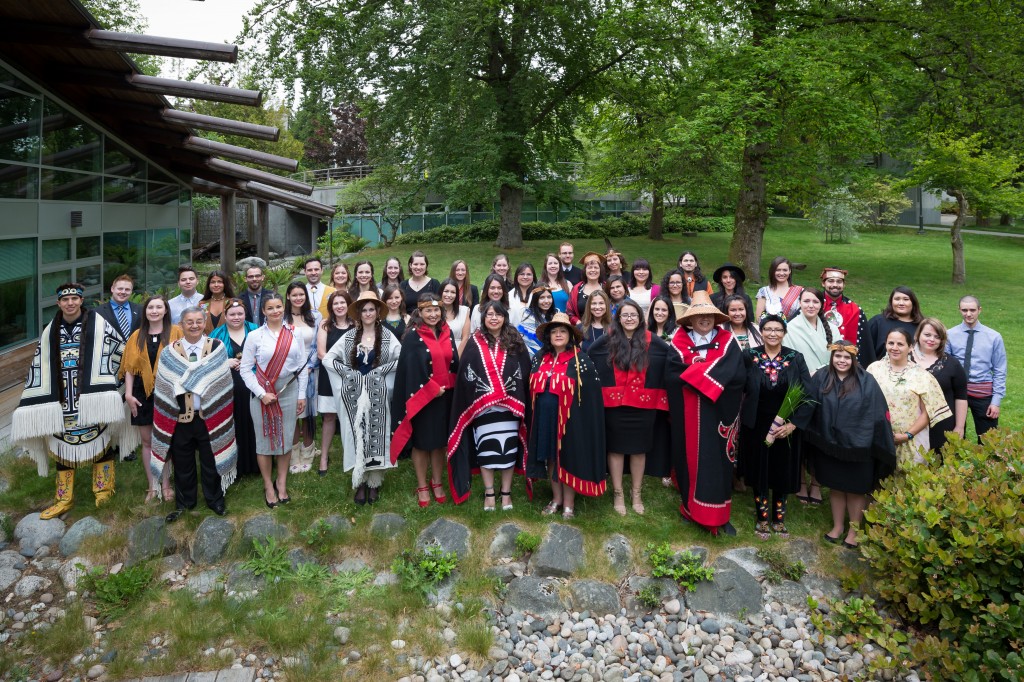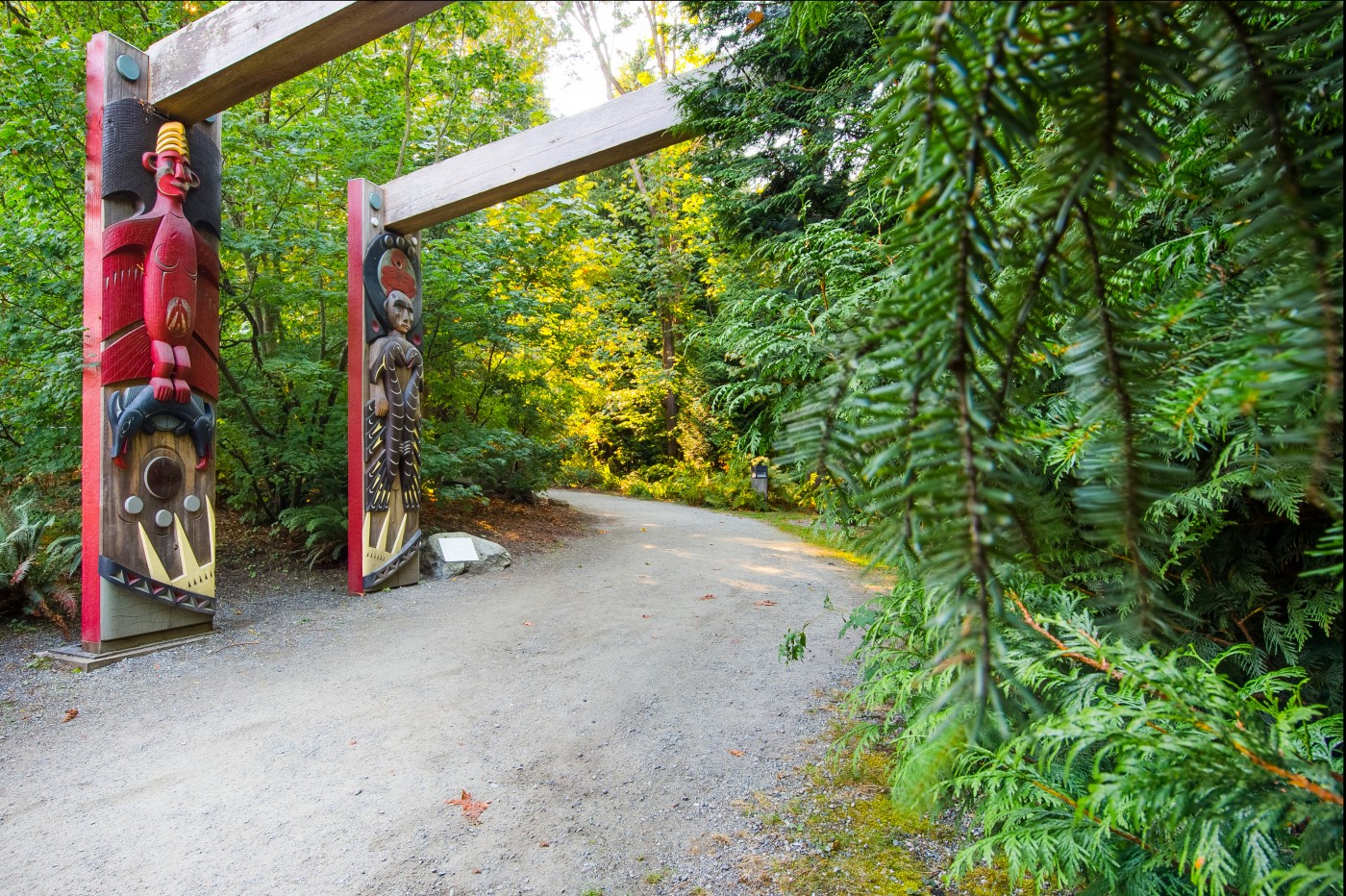At the end of UBC’s first century, 51 of over 200 Aboriginal graduates, their families and friends, staff, faculty, and administrators gathered at the UBC First Nations Longhouse. The group of 350 filled the Sty-Wet-Tan Great Hall to capacity; it was the largest Aboriginal graduation celebration in UBC’s history. The graduates came from just about every discipline across the university. They are future doctors, lawyers, teachers, scholars, and community leaders. They are role models for future generations, and they are hope for UBC’s second century. To learn more about the long history of the university’s interactions with Aboriginal people and communities, visit the Hidden History website at centennial.aboriginal.ubc.ca.

The UBC Point Grey and Okanagan campuses are located, respectively, on the traditional, ancestral, unceded territories of the Musqueam and Okanagan peoples. While our faculty, staff and students have been working for many years to develop mutually beneficial relationships with these communities, it wasn’t until late in UBC’s first century that our partnerships were formally recognized with the signing of Memoranda of Affiliation. A turning point in our history, these memoranda are evidence of UBC’s commitment to increase educational opportunities for Aboriginal people and to meaningfully address issues of importance to Indigenous communities.
This work is being carried out across our campuses. In addition to its many long-standing programs, since 2009 UBC has, under its Aboriginal Strategic Plan, started new programs, developed one of the largest complements of Indigenous professors on permanent appointments at any research-intensive university, and increased Aboriginal enrolment to more than one thousand students in undergraduate, graduate, and professional programs.
UBC researchers are working with communities to find solutions to pressing problems through initiatives such as the Cedar Project, a community-based research project that addresses the impact of the intergenerational effects of Indian residential school trauma on rates of HIV and Hepatitis C among at-risk Indigenous youth. We have expanded curriculum offerings focusing on Aboriginal topics and perspectives in many disciplines, including the health sciences, law, community planning, and core studies in Canadian history and politics.
In both academics and operations, UBC is working to address educational failures of the past. In 1915, UBC began building on what is today the Point Grey campus, but for millennia had been the home of the Musqueam people. We did so with little recognition of this community or attention to their needs and aspirations. This history of the university has largely been unacknowledged until now–to learn more, visit the Hidden History website. Through acknowledging our past, we will move forward in our shared future.
This Centennial year, UBC is taking major steps towards that future. After several years of planning and consultation with local and national groups, UBC is moving forward with plans to open the UBC Indian Residential School History and Dialogue Centre on the Point Grey campus. This major initiative will provide permanent local access to the records of the Truth and Reconciliation Commission of Canada, and will provide a home for advanced research and dialogue for years to come.
“UBC understands the significance of our locations on the traditional territories of the Musqueam and Okanagan peoples,” said UBC Interim President Dr. Martha C. Piper. “We enter the university’s second century with a renewed commitment to partnerships that ensure our common history is understood and our aspirations shared.”
